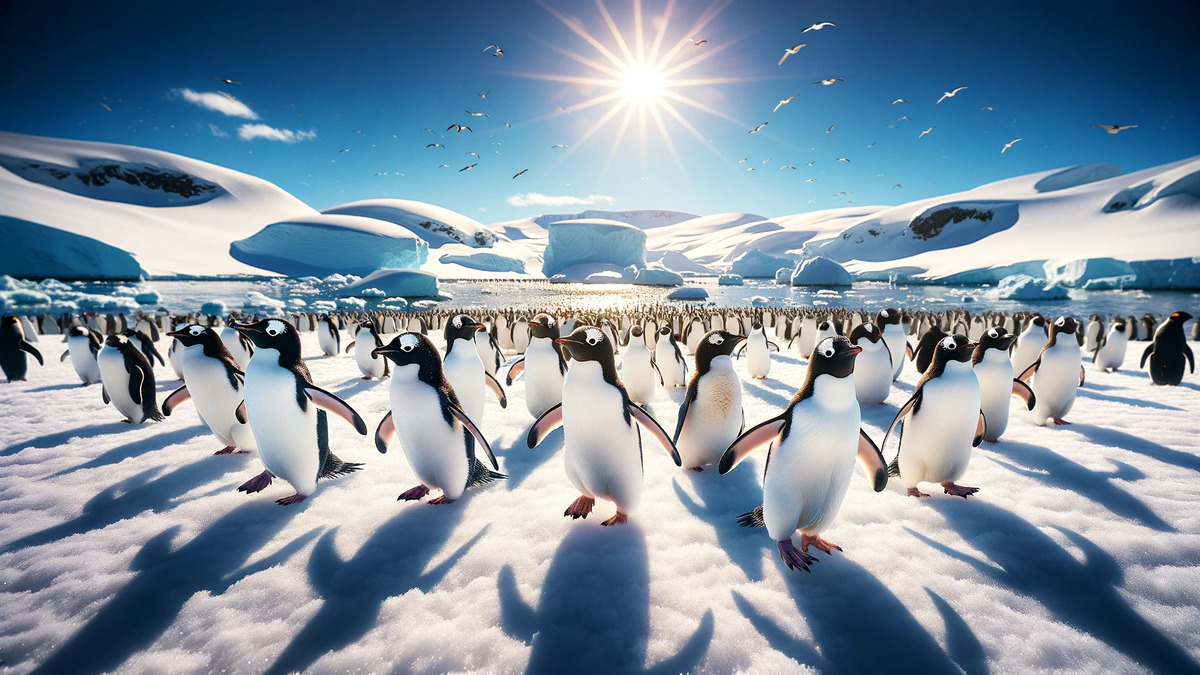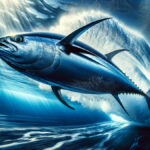Penguins are creatures that have adapted admirably to life in the Southern Hemisphere, particularly in Antarctica. They are an unusual bird, as they spend nearly half of their lives foraging for food in the ocean, showing a deep adaptation to the sea despite their land-based nesting site, and demonstrating their ability to swim and dive rather than fly like many birds.
Their wing structure has therefore evolved to resemble fins used for underwater navigation rather than for flying.
The name ‘penguin’ was originally used for a now extinct flightless bird (Great Auk) that lived in the northern hemisphere, with a history of later becoming the name for penguins in the southern hemisphere.
The word penguin is derived from the Welsh words ‘pen’ meaning ‘head’ and ‘gwyn’ meaning ‘white’. In other words, the name alone refers to a bird with a white head, like the bald eagle. Moreover, no existing penguin species has a white head. Just as the white rhinoceros has nothing to do with white at all, but this one can be considered a worse hoax. Incidentally, I looked up the Welsh word for black and found that it is ‘du’. So shouldn’t everyone call it dugin? (It doesn’t sound cute, so should we just leave it as penguin…)
Incidentally, the Welsh pronunciation is pengwyn.
They communicate and recognise each other by vocalisation, which is not uncommon in birds. This is very important for penguins, which live in large colonies, sometimes numbering tens of thousands of birds.
Interestingly, the deepest dive record for penguins, especially emperor penguins, is a whopping 565 metres. This is an amazing ability to withstand intense underwater pressure.
From a distance, penguins may be mistaken for other flightless birds such as puffins and guillemots, but on closer inspection their unique adaptations set them apart.
Unlike other flightless birds, which are generally adapted to land, penguins are, as mentioned above, aquatic animals, with wings adapted for swimming and a streamlined body suited to their speed in the water. The layer of air trapped in their smooth feathers gives them buoyancy. Furthermore, penguins are only found in the southern hemisphere, whereas similar birds such as puffins are found in the northern hemisphere.
The history of penguin discovery is inextricably linked to human exploration of the Southern Hemisphere: from the first sightings by Antarctic explorers such as Captain James Cook in the 18th century, awareness and understanding of the bird increased and scientific knowledge of its ecology, behaviour and evolution increased.
As a result, interesting facts have emerged, such as the fact that prehistoric penguins were much larger than their modern descendants, with some species being as tall as a human. In other words, there were many gentlemen like Batman’s enemy, the Penguin, long ago.
They are mainly fish-eaters and form an important link in the food chain of the Southern Ocean ecosystem. They prey on small marine animals such as krill, squid and various fish species, and are in an ecological position to feed on predators such as the poor but endangered seals and killer whales.
Penguin faecal matter (guano) is also important when considering such cycles. Penguin manure (guano) is also important when considering such cycles, as it influences nutrient cycling and its high nitrogen content affects both terrestrial and marine ecosystems. In other words, penguin nesting activity affects the physical landscape on the ground.
Due to rising global temperatures and human activities that have reduced their habitat, many penguin species have suffered population declines, leading to several of them being listed as endangered. They serve as an important indicator of the health of the Antarctic ecosystem.
Globally, 18 species of penguin have been identified. Each has unique characteristics, of which the emperor penguin is the tallest and heaviest extant penguin. The little penguin, on the other hand, is the smallest species and is characterised by its bluish plumage.
Different species live in different habitats, with some thriving in the extreme cold of Antarctica, while others, such as the Galapagos penguin, live in the temperate zone.
An old sailor’s proverb: ‘Where there are penguins, there is no need to fear the storm’. This comes from the observation that the presence of penguins often indicates that land and shelter are nearby.
In terms of penguin populations, Antarctica has the largest population of penguins, with millions of Emperor and Adélie penguins. This is followed by the Subantarctic Islands and parts of the southern coast of Africa, including the African penguin. South America, particularly Chile and Argentina, also has important penguin populations, including Magellanic penguins.
Zoo penguins are known to live up to 20 years, with the oldest recorded penguin being a king penguin named Missy who lived to be 36 years old at Edinburgh Zoo.
Their care is manageable in a zoo environment but requires considerable resources and expertise, including a diet of fresh fish, a temperature-controlled environment and enough space and water for swimming, diving and socialisation. Missy is amazing, but so are the keepers at Edinburgh Zoo.
The Detroit Zoo, known for its ‘Polk Penguin Conservation Centre’, is quite large and houses a diverse range of penguins.
The penguins display a number of fascinating behaviours, which make for great anecdotes. For example, penguins often perform a behaviour known as ‘tobogganing’, in which they use their legs and fins to slide on their stomachs on the ice. This interesting behaviour is a practical way for them to conserve energy and travel distances quickly. The world’s first sledders and ice skaters may be penguins.
Another interesting behaviour is courtship rituals. Males of certain species often have a very cute courtship behaviour where they present the female with a pebble as a sign of affection.
Conversely, a not-so-cute tidbit of knowledge is that they actually have quite long legs. In human terms, it is like a person wearing a mackintosh who is always squatting and walking, but only the shoes are visible under the raincoat, and only there are the legs visible.
The baby-like waddling is probably the result of a body shape that keeps the legs out of the way and keeps the body temperature down. When you look at a skeletal specimen of a penguin, it looks like an old man’s pteranodon sitting on the toilet, which may not be the cute image you had in your mind.



コメント